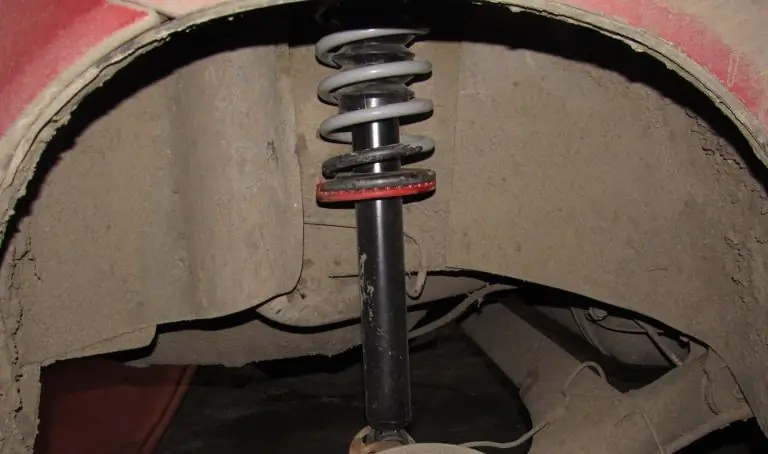2025 Author: Erin Ralphs | [email protected]. Last modified: 2025-01-22 21:14:09
Only a few drivers know how to test a diode bridge with a multimeter, and this knowledge can be very useful. This element plays an important role in the operation of the generator, and because of it, the battery is charged correctly. Often, if there is any breakdown, drivers immediately take their car to the service station. But often it is enough just to check the diode bridge with a multimeter, after which it will be possible to solve the problem on your own, leaving the money that you would have to pay for repairs. Let's take a closer look at what kind of generator element it is and why it is needed at all.

What is a diode bridge? Its working principle
This device in the charger cell acts as a rectifier. To convert the current in the generator, from 4 to 6 diodes are installed, and all of them are combined into a single circuit,called a diode bridge. It is also located directly in the generator itself.
The principle of operation of this element is simple: it passes the current generated by the generator to the battery and does not pass it in the opposite direction - from the battery to the generator. In this case, a resistance of a certain value is created in one direction, and in the opposite direction, the resistance tends to infinity. If there is any malfunction with the bridge, then the car's electronics will fail. Or rather, the battery will fail, and without it the car will simply not start, since the starter itself is powered by the battery.

Why does the diode bridge burn out?
Checking the diode bridge of the generator with a multimeter involves, among other things, finding out the reasons why the diode bridge fails. The most common reason is the accumulation of water inside. Often, after washing the car or driving through puddles, the bridge can burn out.
The second reason is the polarity reversal at the battery terminals. This happens when inept lighting or when connecting the charger to the battery. Of course, there may be more complex reasons for a bridge to burn out, but most often this happens for one of these two reasons. Therefore, try to avoid driving through deep puddles and charge the battery properly.

What is the effect of a burnt diode bridge?
If there are any problems with the battery, then first of all it is worthcheck the diode bridge with a multimeter. The battery is directly connected to this bridge. If it breaks, 2 options are possible: the current does not go to the battery at all, or it goes, but it is very high. This may cause the electrolyte to boil.
Therefore, if there is a problem with the bridge, it must be solved very quickly. Otherwise, you will have to buy a new battery, and it is not cheap. Therefore, it is better to have an idea of how the diode bridge is checked with a multimeter on 2110 and other models of the VAZ brand. There are at least 2 ways to check: using a multimeter or a regular light bulb. Consider both ways.
Checking with a light bulb
First - remove the diode bridge from the generator. However, in the case of a light bulb, this can be dispensed with. We take the bridge assembled and touch it to the battery terminal. Be sure to make sure that the contact is constant and strong. Now we take the bulb and its contact (plus) touches the plus of the battery.

Now we alternately touch the other contacts of the lamp to the contacts of the diodes, then to the contacts for connecting the starter winding. If the light is on, this means that the bridge is "broken" and, therefore, it is not working. Now, if you connect the circuit through one diode in stages, you can identify the faulty element and replace it with a new one.
If there is a need to check the bridge for an open circuit, then the minus of the bridge is "thrown" to the plus of the battery. Then we connect the lamp plus to the plus of the battery. Nowwe connect the free contact of the lamp to the elements, as described above. The lamp in this case should be on. If it does not light up at all or burns with a dim light, then there is an open circuit in the diode circuit.
Checking the diode bridge with a multimeter
As in the previous test method with a light bulb, in this case it is also necessary to remove the bridge from the generator. When checking a diode bridge with a multimeter, each diode is checked separately. First you need to turn on the multimeter in the "Ring" mode, but if there is no such mode, then simply set the resistance to 1 kOhm. In this mode, when two contacts are closed, it will ring.

The bridge is divided into two parts: auxiliary and power diodes. Checking the diode bridge with a VAZ-2114 multimeter and other brands is carried out in the same way for both parts. The principle is as follows: a working diode in the direction of the battery will show a resistance equal to several hundred ohms, in the opposite direction the resistance will tend to infinity.
Connect the multimeter probes to each diode pin. And if the device shows a value that differs from the value after changing the probes in places, then this indicates that the diode has burned out. This operation must be carried out for each diode.

If the resistance is very low
The second option, when checking the diode bridge of the VAZ-2109 generator and other models with a multimeter, assumes the display of zero values. This speaks ofthat there is a break in the circuit. If the readings are close to zero (very low resistance), then this means that the diode is broken. A multimeter as a test device allows you to accurately indicate which diode is out of order and determine the nature of the breakdown. When using a light bulb, everything is approximately the same, however, with a weak charging current, it is more difficult to catch the correct operation. Therefore, the use of a multimeter is recommended, but if it is not available, then you can try to find the problem with a regular light bulb.
However, the only advantage of checking with a light bulb is the fact that it is not necessary to remove the diode bridge from the generator. But without removing the generator, it is impossible to check the diode bridge with a multimeter. Without removing the generator, this cannot be done. There you have to work with individual parts, but this gives a more accurate result.
When a non-working diode is found, it is replaced with a new one. This is easy to do with a soldering iron. The diode itself costs a penny and is sold in any auto parts stores. Its replacement is also not difficult, and you can do it yourself.
Conclusion
There is nothing difficult in this procedure. If you are more or less familiar with electronics and know how to use a multimeter, then you can check and replace faulty diodes yourself. For this, you do not need to contact the service station, where they will require money for checking, and even more so for repairs.
All items needed to repair a diode bridge are commercially available. Yes, and the diode bridge itself is generally inexpensive, but there may be problems withlooking for a bridge for a certain rare generator model.
Finally: if something is wrong with the battery, then you are very lucky if the cause is in the diode bridge. This, one might say, is a consumable that has to be changed from time to time. But the main thing here is to identify the malfunction in time, before the battery itself has time to suffer.
Recommended:
How to replace the rear rack "Kalina" without removing the wheels

Shock absorber struts "Lada Kalina" are designed to smooth out vibrations caused by various irregularities when the car is moving. Unfortunately, despite the constant road construction, they have to work quite intensively. As a result, early failure and the need for replacement. To do this, it is not necessary to contact the service and spend additional funds. The rear struts of "Kalina" can be completely replaced on their own, sometimes even without removing
How to store tires without rims in winter or summer? Proper storage of car tires without rims

Twice a year, cars are "changed shoes", and their owners are faced with the question: "How to store rubber?" This will be discussed in the article
How to test a generator without special equipment

The generator is an integral part of the machine, as it provides power to all electrical devices. A failure in its operation can lead to quite deplorable situations, but what if it is not possible to send your favorite car for service, and how to check the generator? Everything is possible to do by yourself, the main thing is that your hands are ready to work
Checking the generator relay-regulator: methods, principle of operation and functions

The car's electrical network is powered by a generator that drives the engine through a belt drive. The stability of the supply voltage is provided by the relay-regulator. If there are problems with recharging the battery and other defects in the electrical network of the machine, this device requires a primary check
Gazelle generator and its malfunctions. Installation of the generator on the "Gazelle". How to replace the generator with a Gazelle?

The electrical equipment of this car is made according to a single-wire scheme: the negative terminals of the instruments and equipment are connected to the "mass" - the body and other mechanisms of the car, which play the role of a second drive. The on-board network of the Gazelle is equal to the nominal voltage of 12V DC. To turn on the electrical circuit, the ignition switch is used, which consists of a contact drive and an anti-theft lock

